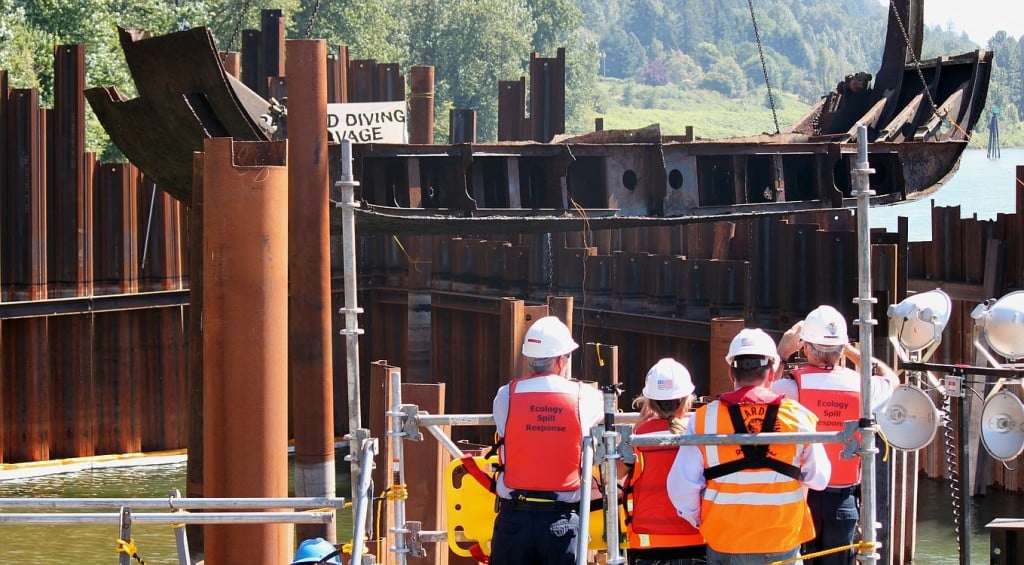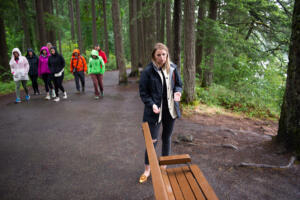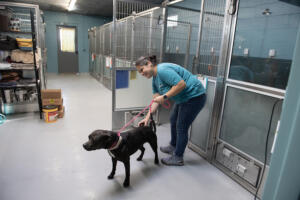Thursday marked a “significant day” in the deconstruction of the SS Davy Crockett, as the final 60-foot long, 55,000 pound, rusty metal section of the derelict barge was slowly lifted from the waters of the Columbia River.
“The occasion of today is a very rewarding day to us,” said Capt. Daniel LeBlanc, Coast Guard incident commander and on-scene coordinator. “This is a symbolic event that signifies all of the work that has been put forth to make sure we protected the environment.”





